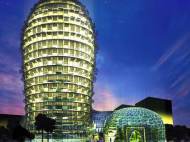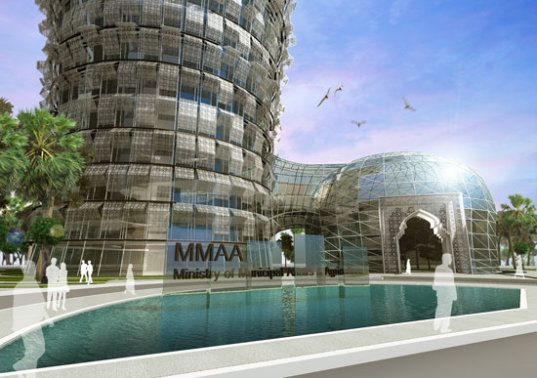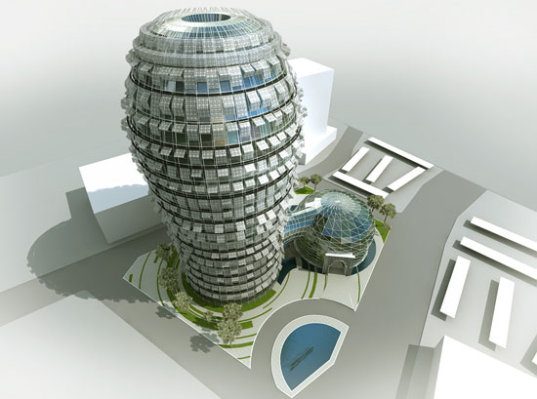Green architecture – Qatar cacti biomimicry
 With this article we’re starting a new series on our website and it is about architecture. Due to the changes regarding our environment and temperature it is important to emphasize the new ideas and techniques that bring more balance between our creations and nature. Creating architecture which mimics nature or shows technological advances covers two of our main subjects. Hence we are starting the green architecture series.
With this article we’re starting a new series on our website and it is about architecture. Due to the changes regarding our environment and temperature it is important to emphasize the new ideas and techniques that bring more balance between our creations and nature. Creating architecture which mimics nature or shows technological advances covers two of our main subjects. Hence we are starting the green architecture series.
The Minister of Municipal Affairs & Agriculture (MMAA) in Qatar is getting a brand new office building that takes the form of a towering cactus. Qatar is fairly barren, covered by sand, and receives and average annual rainfall of 8.13 centimeters. Since Qatar has the highest GDP in the world, they can afford to construct spectacular buildings that can be very efficient in the hot desert environment.
The designers from Bangkok-based Aesthetics Architects GO Group decided to model the MMAA’s new office upon the cactus, taking inspiration from the way these plants deal with the scorching desert climate. The modern office and adjacent botanical dome are going to biomimic the cacti and the way that they successfully survive in hot, dry environments.
MMAA’s new building is designed in order to be very energy efficient and utilizes sun shades on its windows. Depending on the intensity of the sun during the day, the sun shades can open or close to keep out the heat when it is too much. This is similar to how a cactus chooses to perform transpiration at night rather during the day in order to retain water – another great example of biomimicry.
The botanic dome at the base of the tower will house a botanical garden. Hopefully it will include innovative solutions for waste-water management re-envision the process as an eco-conscious endeavor, conserving water and reducing overall treatment costs with minimal sludge disposal, water purchases, sewer surcharges, and chemical use.
By re-organizing the natural resources it is possible to transform water from dirty to clean. In one of the most basic solutions, waste-water pulses through a minimum of three different ecological systems that process and filter it in different ways. Each ecological system is isolated from the others so that it can treat waste-water based on its own unique needs, after which the water cycles on to the next community.
The technology would use helpful bacteria, fungi, plants, snails, clams and fish that thrive by breaking down and digesting pollutants. The selection and further cultivation of diverse communities is a solution in order for all compounds to be treated. The magic lies in understanding how the organisms interact and their combination. By combining them just right, that they can soak up the nutrients they love, enabling them to grow while they provide cleaned water. The botanical dome can also be used for climate control and air control, as well as for cultivation of a sustainable food source for the employed people.











integrate my fruitplans in my building
and in the space before my room
my Bananetree, my kiwis, my tomatos and my ERDBEEREN on
the Roof
hi great concept…could i get the model or interior design of tis structure…
Marvelous!
Dr.A.Jagadeesh Nellore(AP),India
E-mail: anumakonda.jagadeesh@gmail.com
does this building exists on site?
author
Hi V Rachana, as far as i can find, the commpany changed their website (I’m updating link in article) and it still stands among their projects here: https://www.aesarchitects.com/work-detail/72 . As far as I could see it’s not on site… which confirms right decision to avoid writing about concept ideas (for gadgets/architecture) afterwards. This was the first article in the Green architecture category.